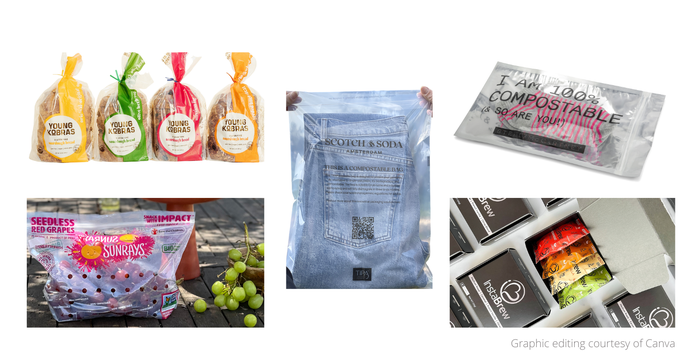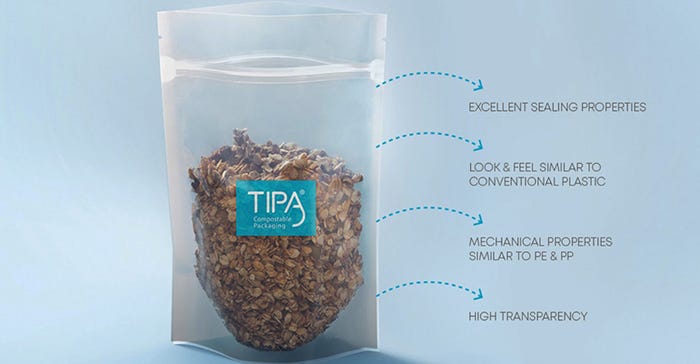Compostable Packaging: Tipa Talks Markets, Applications
Food and fashion markets headline growing interest in the company’s flexible packaging. Stella McCartney fashions and Sunrays grapes are among customers.

In a market study released in June 2022, Data Bridge Market Research reports that the compostable packaging market was valued at $46.4 billion in 2021 and is expected to reach $75 billion by 2029. That’s a compound annual growth rate of 6.2% for the forecast period of 2022 to 2029.
It’s a market attracting an expanding number of environmentally minded companies and consumers seeking an option for single-use plastics that are not recycled.
A company positioned at the center of this market is Tipa, the Israel-based compostable packaging specialist with North American headquarters in Jersey City, NJ, near New York City.
It’s no wonder that the Tipa’s VP of North America, Michael Waas, characterizes interest in the market as “growing as brands of all sizes are looking to replace conventional packaging with an eco-friendly alternative. Tipa is thrilled to offer compostable packaging solutions provide the same benefits as conventional packaging, but with an organic end-of-life to our customers in the food and fashion industries.”
The #1 most popular question for compostable packaging is...
New customers attracted by compostable packaging have questions, starting with a crucial one.
“The most common question potential customers ask is how to properly dispose of compostable packaging,” responds Waas. “Companies are excited to introduce sustainable solutions like compostable packaging, and governments and local municipalities are still in the process of building the infrastructure for community and industrial compost sites. This is part of the reason Tipa offers certified home-compostable packaging, which can be conveniently composted in consumers' backyard or home bin along with organic waste, as a sustainable packaging solution.”
While the specific composition of the flexible materials varies by product, it can include up to 80% bio-based content sourced from sugar cane, non-GMO corn, and FSC-certified wood pulp, according to Waas.
He dispels a general misunderstanding associated with this type of packaging.
“One of the most common misconceptions is that compostable is the same as biodegradable,” Waas explains. “The term ‘biodegradable’ represents a process, but it doesn’t specify the specific conditions or time frame. Technically, all chemical compounds can be biodegradable under the right conditions, but the timeframe could be hundreds, or even thousands, of years. Under the proper conditions of heat, humidity, oxygen, and microorganisms, compostable material breaks down into carbon dioxide, water, and a nutrient-rich compost in well under a year.”

Waas feels strongly that all stakeholders must act quickly and responsibly to what he calls the plastic problem.
“This is the time for industry leaders and governments to realize that there is no escaping the plastic pollution crisis,” he asserts. “Plastic waste is causing an unaddressed global environmental and health crisis, and there is an urgent need for sustainable packaging alternatives. Tipa encourages brands and consumers to reduce the amount of plastic packaging waste by switching to more sustainable solutions like compostable packaging.”
Tipa’s portfolio of packaging options include resealable bag for ecommerce and other markets; home-compostable, single-ply garment bags; wicketed open bags for produce, bread, and dry foods; zipper bags for apparel and food packaging; resealable zipper pouches; resealable, stand-up pouches with a stable bottom gusset; and compostable fashion mailers.
The slideshow gallery features five in-market applications of Tipa’s compostable flexible packaging with details.
About the Author(s)
You May Also Like




